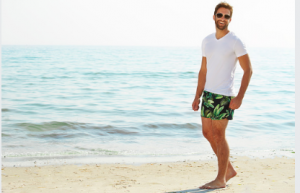A building inspector is a city, township, or county employee who performs building inspections. These professionals have the training and are typically certified in at least one discipline, such as construction. This allows them to make professional judgments regarding a building’s compliance with its code. For more information about this profession, read on. We have also listed this profession’s salary range, educational requirements, and work environment. Interested? Start your search now!
Qualifications
 In addition to high school diplomas, the qualifications of building inspector often depend on the job they’re applying for. Some employers prefer applicants with an engineering or architecture degree, while others may be willing to accept candidates with an associate’s degree. Building inspectors with a certificate or an associate’s degree typically require more training and experience than those without degrees. Community colleges typically offer certificate and associate degree programs in building inspection technology. Coursework in blueprint reading, algebra, geometry, and English can also prove beneficial.
In addition to high school diplomas, the qualifications of building inspector often depend on the job they’re applying for. Some employers prefer applicants with an engineering or architecture degree, while others may be willing to accept candidates with an associate’s degree. Building inspectors with a certificate or an associate’s degree typically require more training and experience than those without degrees. Community colleges typically offer certificate and associate degree programs in building inspection technology. Coursework in blueprint reading, algebra, geometry, and English can also prove beneficial.
Although most inspections are purely visual, home inspectors use test equipment, survey instruments, and other methods to determine whether a building meets or does not meet codes. Generally, inspectors report to construction companies when they discover a violation of building codes, ordinances, or plans. They can also issue a stop-work order to halt construction activities if they suspect a building is illegal. Building inspectors can work alone or as part of a team to ensure a building is safe.
Salary
The median salary of Building Inspectors is $61,640 per year. The salary scale is calculated as a percentage of the total compensation, and half of the people in this profession earn less than this figure. However, the lowest 10 per cent earn less than twenty-two thousand, and the top 10 per cent make more than eighty-six thousand. Check https://premiumprepurchaseinspections.com.au/ for more information.
Work environment
The work environment for building inspector is very varied, and there are many different aspects to consider. These professionals must be meticulous, as errors can have serious consequences for the health and safety of the public. They often work independently and without a direct line of supervision, but they are expected to meet weekly deadlines. They can set most of their schedules and rarely consult their supervisors. Their job may require them to work irregular hours, especially during good weather and construction booms.
Those who choose to become building inspectors must be physically fit because they are on their feet all day and often have to crawl through tight spaces. The pay for this job is not very high, but it is higher than average. While the median annual income is only $60,710, the lower-paid 10 per cent earned less than this amount, and the highest-paid 10 per cent made more than that amount. However, there are no mandatory salary ranges.
Education
Become a building inspector by earning a certificate. Earning a certificate proves that you know a lot about the construction industry and building codes. Certificate programs include Building Inspection Technology, Electrical Inspection, and Concrete Construction. Other schools offer a Certificate in Building Code Enforcement. The length of the certificate program depends on the school. Most programs require 15 to 32 credits. To become a building inspector, you must complete at least 6,000 hours of classroom and field instruction. Check https://premiumprepurchaseinspections.com.au/ for more information.
To become a building inspector, you can get certified through professional associations like the International Code Council. Certification requires self-study in the building codes and ordinances and a proctored exam. Although not required in every state, many employers prefer to hire candidates with professional certification. In addition, these voluntary certifications can increase your earning potential and open up more leadership opportunities. Listed below are some of the benefits of becoming a building inspector.

 Here are some safety guidelines for parents planning a rafting trip for kids:
Here are some safety guidelines for parents planning a rafting trip for kids: Board shorts
Board shorts As a
As a